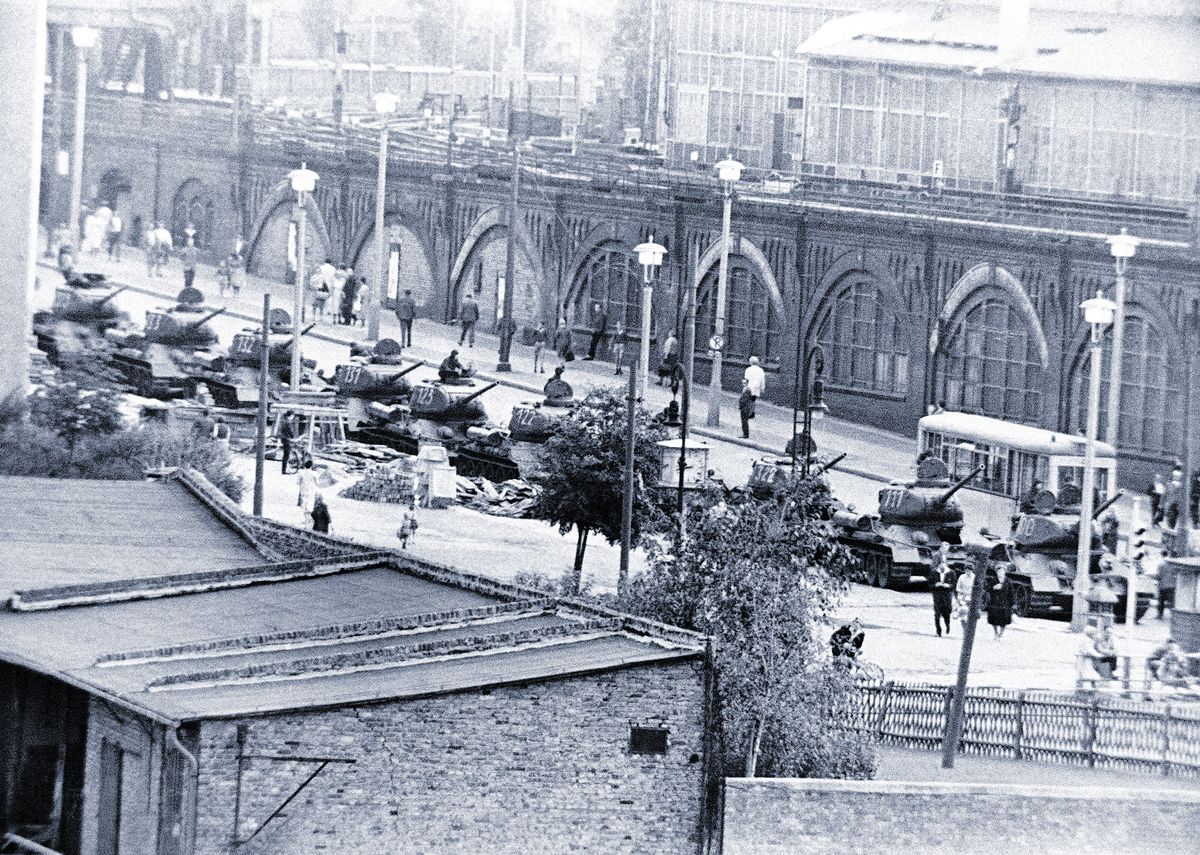On this date 60 years ago, the Soviet-backed government of East Germany began building a wall around West Berlin which was cut off from the rest of West Germany but controlled and occupied by Western countries.
The reason given, at the time, for the wall was to keep the Western fascists out of East Germany. The real reason was to stem the tide of thousands of East German citizens defecting to the West.
The life and times of the Berlin Wall
FEBRUARY 1945 At the Yalta Conference in the closing days of the war in Europe, the Allies agree to divide Germany into four occupation zones: Great Britain, France and the United States will occupy the western, northwestern and southern portions, and the Soviet Union will occupy the eastern. Berlin, located in Soviet territory, is also divided into east and west zones. MAY 7, 1945 Germany surrenders. JUNE 24, 1948 The Soviet Union cuts off all land and water routes running between Berlin and the rest of West Germany. The Allies respond two days later by shipping supplies — more than 2.3 million tons of food, fuel and other goods over the next year — to Berlin via U.S. C-47 and C-54 aircraft. What comes to be known as the Berlin Airlift would end only after the Soviets call off the blockade on May 12, 1949. MAY 12, 1949 The Federal Republic of Germany — West Germany — is founded. Twelve days later, the German Democratic Republic — East Germany — is founded. JUNE 17, 1953 Workers across East Germany go on strike to demand better working and living conditions, free elections and unification of their country. The Soviet army helps the East German government crush the revolt. MAY 5, 1955 The Allies proclaim Germany a sovereign state, officially ending post-war occupation. JUNE 15, 1961 Conditions in East Germany continue to worsen and rumors swirl that the border may be closed one day. East German leader Walter Ulbricht declares, “Nobody intends to build a wall.” Thousands of East Germans read between the lines of that statement and make plans to leave. That month, 19,000 people would depart East Germany through Berlin. In August, 30,000 would flee. AUG. 12, 1961 At least 2,400 East Germans leave the country in a single day. With the permission of Soviet Union Premier Nikita Khrushchev, Ulbricht signs an order to build a barricade separating East and West Berlin. AUG. 13, 1961 The border between East and West Berlin is closed just after midnight. Work on what Ulbricht calls an “Antifascistischer Schutzwall,” or “antifascist bulwark,” begins as police, troops and volunteers begin stringing a barbed wire fence along the 100 miles around West Berlin. AUG. 19, 1961 The new wall claims its first life as a man, trying to climb down from his top-floor apartment in East Berlin’s Bernauerstrasse to the pavement below in West Berlin, falls to his death. AUG. 20, 1961 Tensions increase along the border. The U.S. sends a 1,500-troop task force to Berlin. AUG. 23, 1961 West Berliners without permits are banned from entering East Berlin. AUG. 24, 1961 Twenty-four-year-old Guenter Litfin is shot dead by East German border guards as he attempts to swim to freedom across the river Spree. It’s the first known killing by border guards. OCT. 22, 1961 A quarrel between an East German border guard and an American official on his way to the opera in East Berlin very nearly leads to what one observer calls “a nuclear-age equivalent of the Wild West Showdown at the O.K. Corral.” American and Soviet tanks face off for 16 hours at Checkpoint Charlie. |
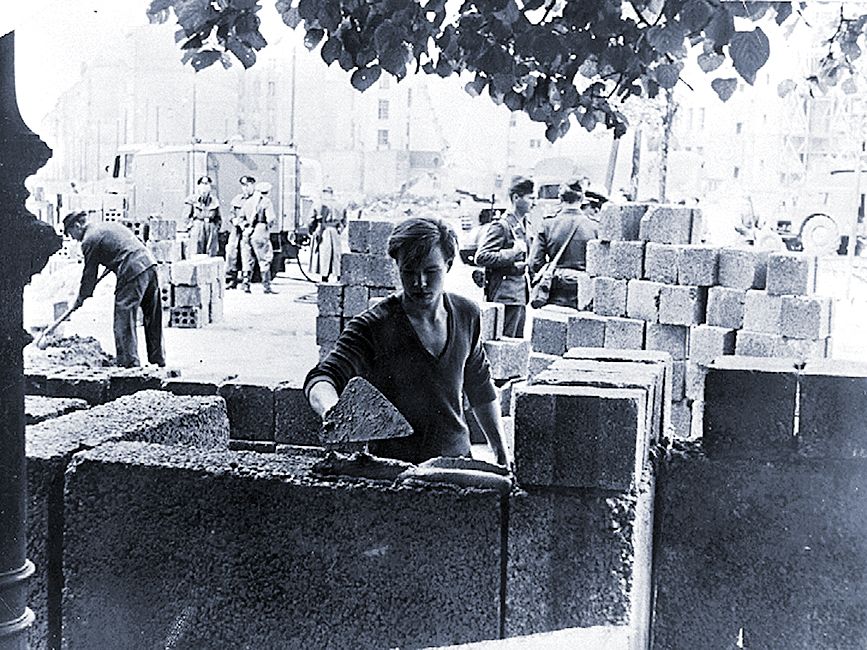
A concrete mason works on part of the wall between East and West Berlin on Aug. 13, 1961. (PETER HILLEBRECHT/ASSOCIATED PRESS) 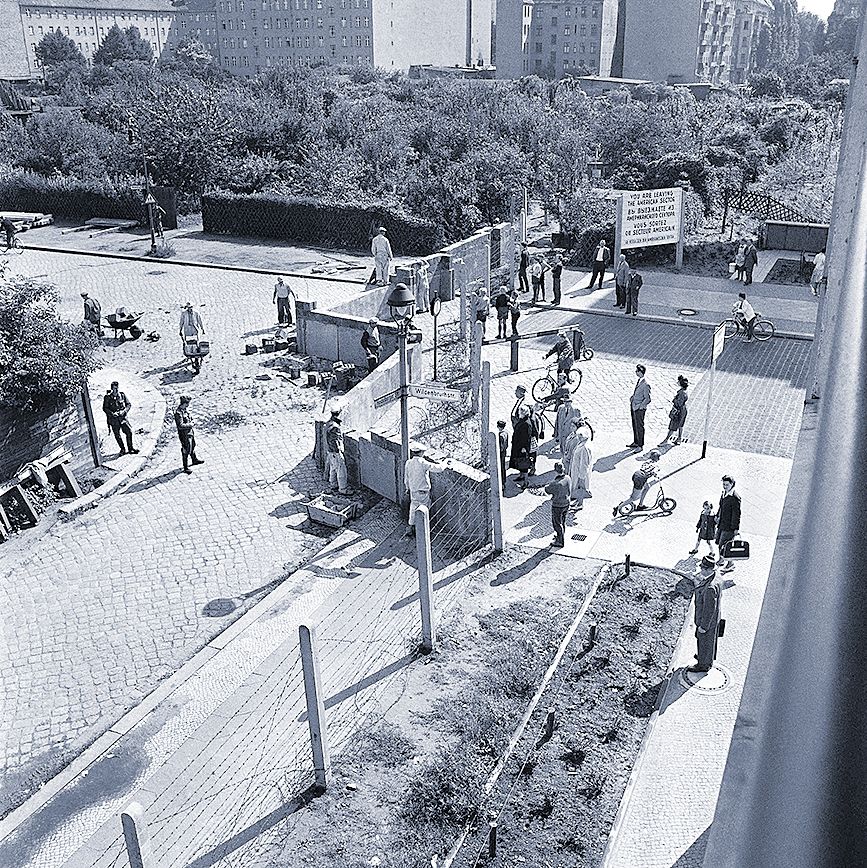
Spectators in the French sector of East Berlin watch as East German workers stack concrete blocks on Aug. 13, 1961. (PETER HILLEBRECHT/ASSOCIATED PRESS) 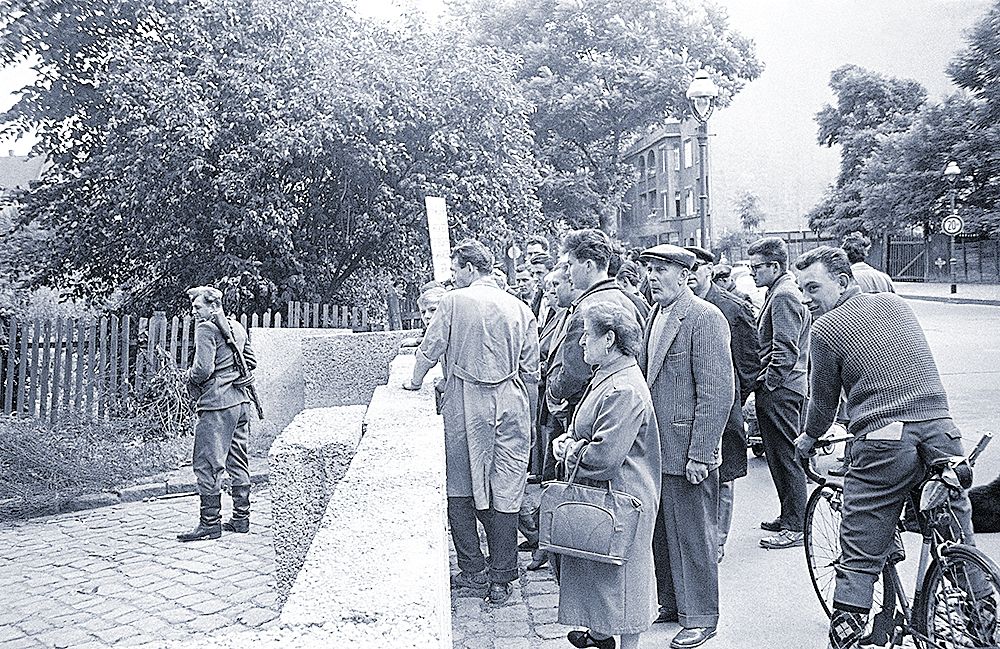
West Berliners gather to gawk at East German border guards on the other side of the new wall on Aug. 18, 1961. (ASSOCIATED PRESS) 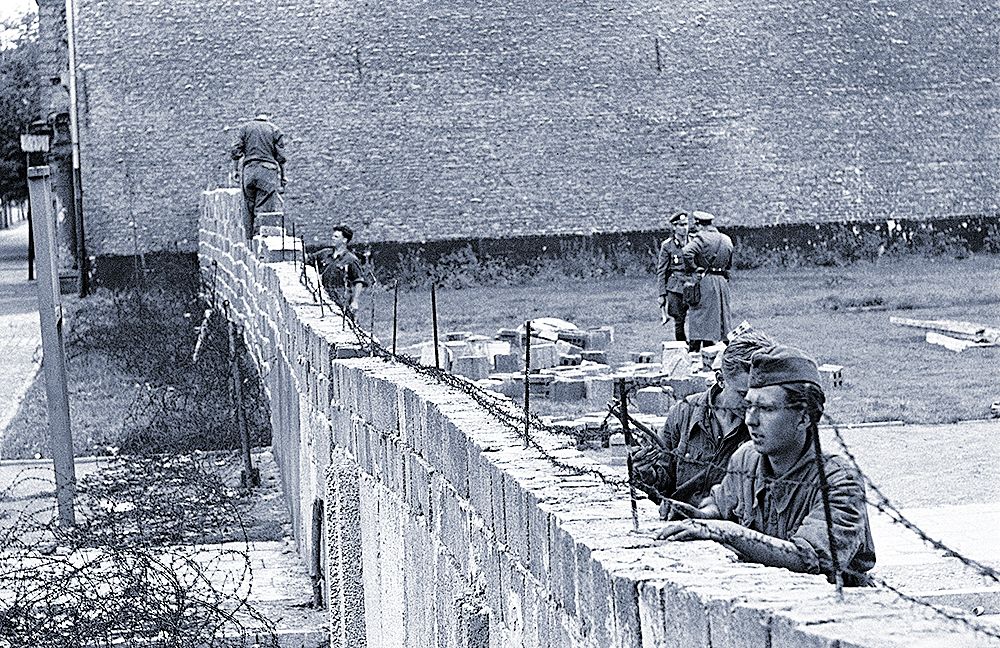
East German policemen remove barbed wire in order to raise the wall to 15 feet on Sept. 9, 1961. (EDWIN REICHERT/ASSOCIATED PRESS) |
AUG. 17, 1962 Eighteen-year-old Peter Fechter bleeds to death in no man’s land after being shot trying to escape. Western cameramen record the scene for nearly an hour before East German guards take away his body. JUNE 26, 1963 President John F. Kennedy gives a speech in front of the Schöneberg City Hall in the western half of the city: “All free men, wherever they live, are citizens of Berlin, and, therefore, as a free man, I take pride in the words, ‘Ich bin ein Berliner.’” SEPT. 12-13, 1964 At the invitation of West Berlin Mayor Willy Brandt, Martin Luther King Jr. visits East and West Berlin. He crosses through the border checkpoint using his American Express card for ID. DEC. 17, 1971 An agreement between East and West Germany makes it easier to travel to and from Berlin. DEC. 21, 1972 West and East Germany sign a treaty that normalizes diplomatic relations and recognizes each other’s sovereignty. JUNE 12, 1987 In a speech at the Brandenburg Gate, President Ronald Reagan challenges Mikhail Gorbachev, leader of the Soviet Union, to “tear down this wall!” JANUARY 1989 Protests against the East German government have become bolder and more widespread, but East German leader Erich Honecker — who had been in charge of building the wall 28 years before — insists: “The wall will stand in 50, even 100 years.” APRIL 1989 East German border guards are instructed to stop “using firearms to prevent border violations.” AUG. 19, 1989 More than 700 East German refugees cross the newly-opened Hungarian-Austrian border and flee to the West. Over the next month, thousands more would follow. OCT. 4, 1989 The East German government comes under increasing pressure to reform. Mass anti-government demonstrations are held in Dresden, Leipzig and East Berlin. Honecker is forced to resign on Oct. 18. NOV. 4, 1989 More than a half million people attend a pro-democracy demonstration in East Berlin's main square. NOV. 7, 1989 The East German cabinet resigns. Almost half of the members of the Politburo are removed and replaced the next day. NOV. 9, 1989 East German officials announce all East Germans can go to the West from following day if they apply for an exit visa. Most East German citizens either misinterpret or misunderstand the announcement or simply take it a step further. By midnight, hundreds of thousands East Germans are at the gates of the wall, demanding entry into West Berlin. Facing a crush from a growing mob, border guards relent. A celebration with East and West Germans sharing champagne and dancing atop the wall lasts well into the night. Crowds begin to pull down the wall using their hands, pickaxes, sledgehammers, shovels — whatever they can get their hands on. Within a few months, the Berlin Wall would soon almost completely disappear. OCT. 3, 1990 East and West Germany officially become reunified under the name the Federal Republic of Germany. |

